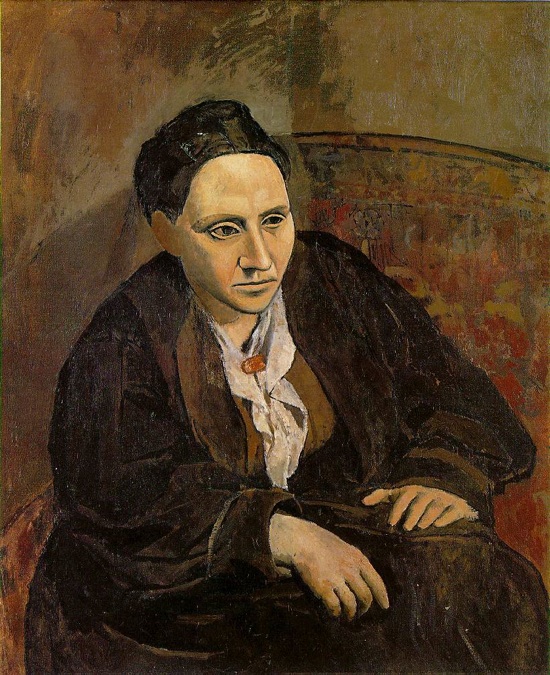Gertrude Stein
By:
February 3, 2011

In “Poetry and Grammar,” one of her Lectures in America, GERTRUDE STEIN (1874-1946) remarks, “I really do not know that anything has ever been more exciting than diagramming sentences.” Stein was part of the first generation of American students to be taught grammar using the then-groundbreaking Reed-Kellogg trees rather than Latin declensions. Her writing bears this out: among modernist poets and novelists, she shows a complete lack of interest in classical allusions and structures, favoring instead variation and repetition to near-disintegration of seemingly simple English sentences, each “mistake” or transposition of logic and syntax carrying a shift in meaning. It was her literary transformation of her friend Picasso’s cubism, to use the term coined by another friend, Guillaume Apollinaire; in the 1920s, these three prewar modernists found themselves joined by a generation of fellow-travelers. “No one is ahead of his time,” Stein writes in “Composition as Explanation,” “it is only that the particular variety of creating his time is the one that his contemporaries who also are creating their own time refuse to accept […] and it is very much too bad, it is so very much more exciting and satisfactory for everybody if one can have contemporaries, if all one’s contemporaries could be one’s contemporaries.”
***
On his or her birthday, HiLobrow irregularly pays tribute to one of our high-, low-, no-, or hilobrow heroes. Also born this date: Simone Weil and Kenneth Anger.
READ MORE about men and women born on the cusp between the Anarcho-Symbolist (1864-73) and Psychonaut (1874-83) generations.
